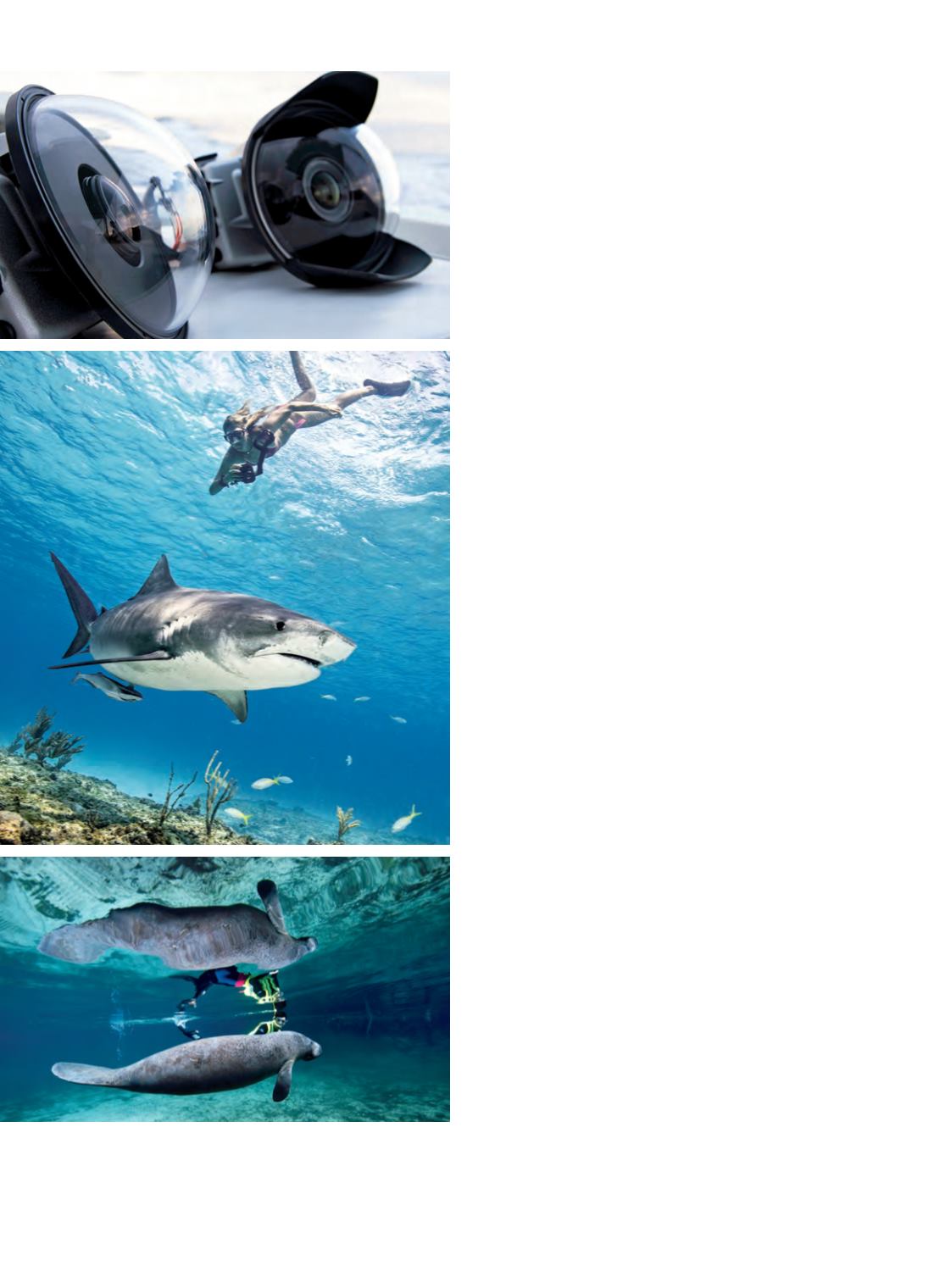
102
|
WINTER 2014
is beneficial in many areas (such as when freediving
with pelagics) in the same way the Nikonos V was. The
Olympus OM-D has such high image quality that I feel
I’m not compromising on the final photograph, and I
can simply get the camera places I can’t get my D4.”
That’s the legacy to which we aspire: the small size and
convenience of a Nikonos V with a 15mm lens combined
with modern, high-quality digital image capture. Many of
the smaller housings for compact and mirrorless cameras
along with their dedicated wide-angle optics have come a
long way toward achieving that goal.
Buying new gear for an occasional freedive
opportunity may not make sense, but you can make
existing gear more efficient. One of the easiest
adjustments is to remove sunshades from large-
diameter dome ports. These shades protect the domes
from scratching and reduce the possibility of flare in
some lighting conditions, but the tradeoff is that they
present significant water resistance. Swimming with
them can sometimes feel like dragging a sea anchor.
Some shades may not be removable, but most have a
few screws holding them in place so they can be taken
off. A mini-fisheye port will create less water resistance
than a large-diameter “superdome,” provided the
desired lens will work behind such a port.
STROBE VERSUS AMBIENT LIGHT
Sometimes you’ll have no choice in the matter of “to
strobe or not,” because certain animals are protected
by regulations prohibiting the use of artificial light.
These regulations may also restrict scuba, as bubbles
can disturb some animals unduly. An encounter with
the whale sharks off Isla Mujeres, Mexico, is an example
of a situation in which strobe might help the overall
image. It should be noted that the sharks are there to eat
the seasonal spawn of little tunny, so the strobe might
contribute unmanageable backscatter. But the sharks’
counter-shaded coloration might be better displayed with
strobe light, and a little illumination inside the cavernous
maws will reveal detail that would otherwise be shaded.
Other animals make the choice for you by moving
so swiftly that leaving behind the strobe — with its
additional drag — means the difference between getting
the shot and being left in the wake. For the sperm
whales in Dominica I opted to shoot with available
light, as the days were sunny and the whales were most
often near the surface (at least when we could see
them). They can dive to 10,000 feet in search of prey,
so strobes would be the least of my problems if I tried
to photograph them at depth. Deeper than about 40
feet it was a hopeless pursuit anyway. While some shots
From top: A sunshade on a large dome port can provide
significant water resistance. A smaller camera, in this case
the SeaLife DC1400, is easier to push through the water than
a large DSLR housing. With the manatees in Crystal River,
scuba is prohibited and access is only on snorkel.
STEPHEN FRINK
STEPHEN FRINK
STEPHEN FRINK


